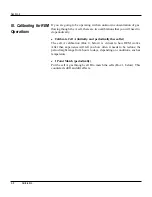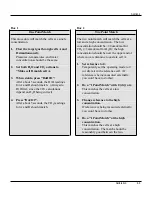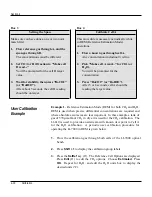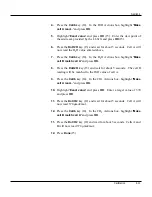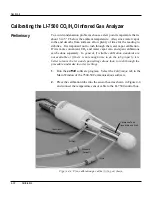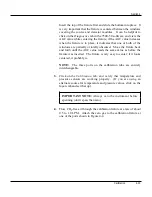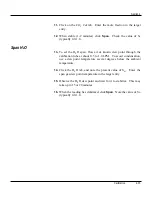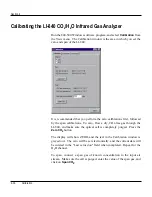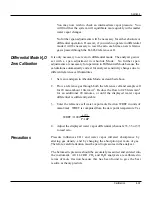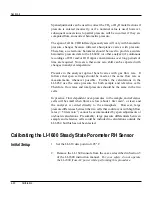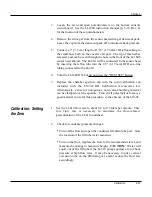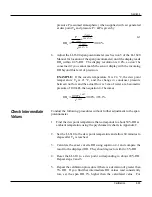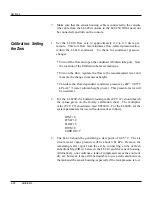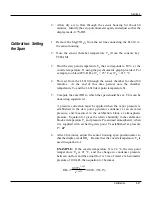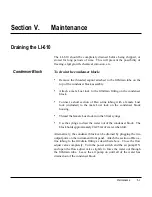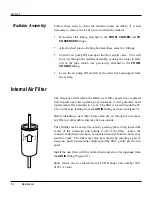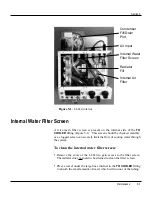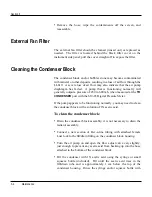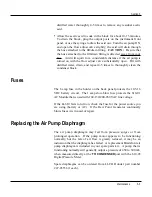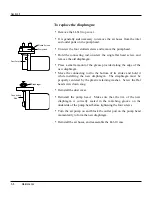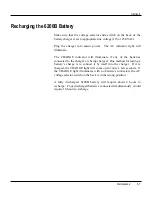
Section 4
4-22
Calibration
•
Calculate the flow-dependent condenser pressure as
∆
P = 0.0979
kPa cm
-1
×
(water column height, in cm). This pressure factor will
be used later.
3.
The LI-610 should be generating a dew point of 0.05 °C. The air
stream water vapor pressure will be about 0.61 kPa. Any remaining
water vapor can be removed by placing a tube of freshly dried silica
gel (oven dry at 175 °C for 1 hour) or anhydrous Mg(ClO
4
)
2
between
the LI-610 and the LI-1600 sensor head. Alternatively, one could use
a tank of compressed air or nitrogen as the source of dry air.
4.
Allow this dry air to flow through the LI-1600 cuvette chamber for
about 60 minutes. Adjust the zero potentiometer so the display reads
2% RH if silica gel is used, or 0% if Mg(ClO
4
)
2
, compressed air, or
nitrogen is used.
☞
The LI-1600 will not display negative values. If you are using a
compressed air tank and the display reads zero, adjust the potentiometer
until the display shows a small positive number, and then turn the
potentiometer down until the display reads zero, and the null meter is
centered.
Calibration: Setting
the Span
1.
Remove the Mg(ClO
4
)
2
or silica gel tube from the air line
connecting the LI-610 to the LI-1600.
2.
Note the LI-1600 cuvette temperature, T
c
on the LI-1600 console
display.
3.
Find the dew point temperature T
d
that corresponds to 80% RH at
the cuvette temperature T
c
using the psychrometric graph provided.
For example, to obtain 80% RH at T
c
= 25 °C, set T
d
= 21.3 °C.
4.
Flow the air from the LI-610 through the cuvette for about 60
minutes. At the end of this time period, note the cuvette temperature
T
c
, and the LI-610 dew point temperature T
d
.
5.
Compute the exact RH to which the span should be set. If the vapor
pressure is generated at an elevated pressure, as occurs in the dew
point generator condenser, a pressure correction must be applied
when vapor pressure is measured at atmospheric pressure. The
relative humidity in the LI-1600 cuvette at temperature T
c
and

